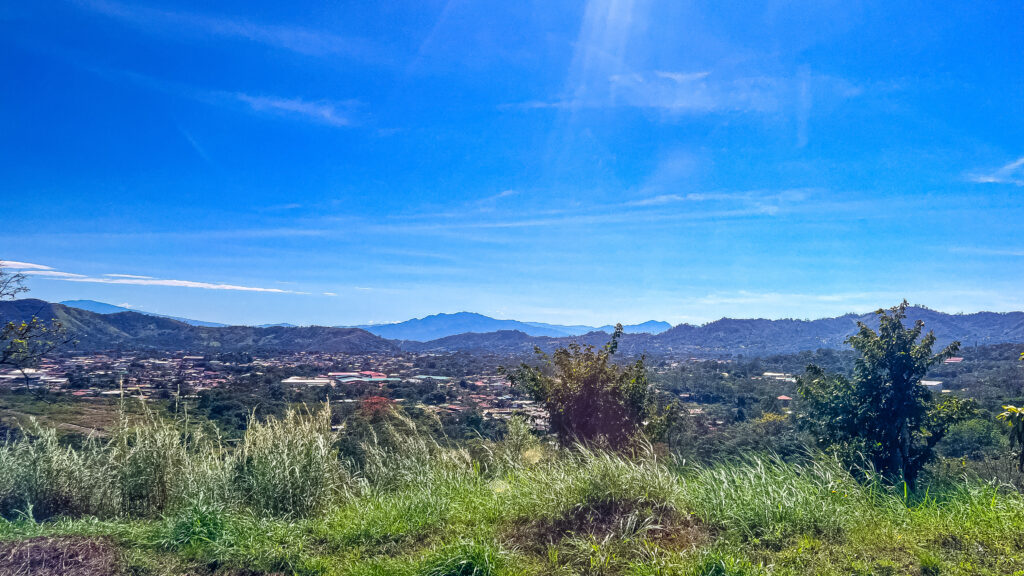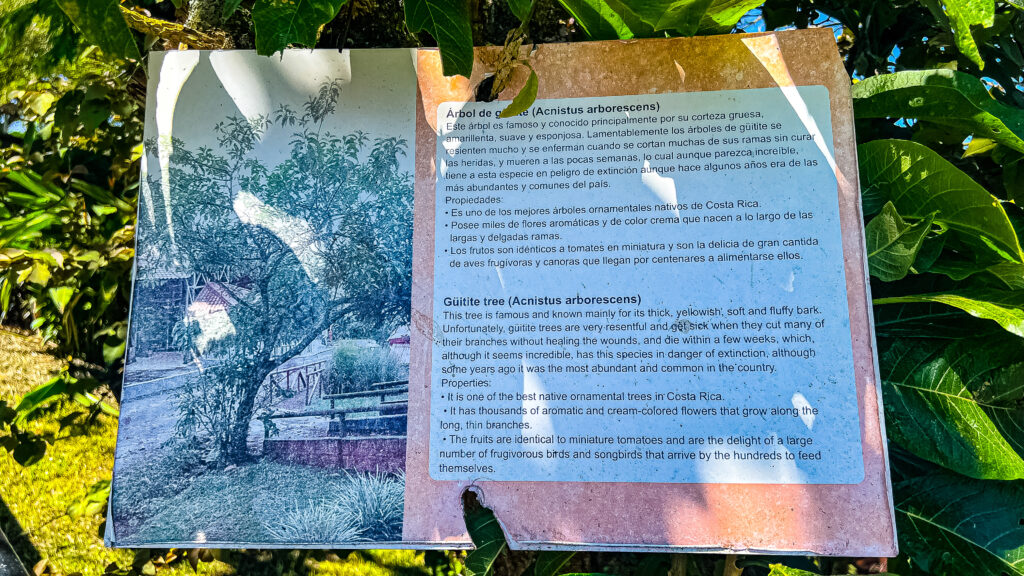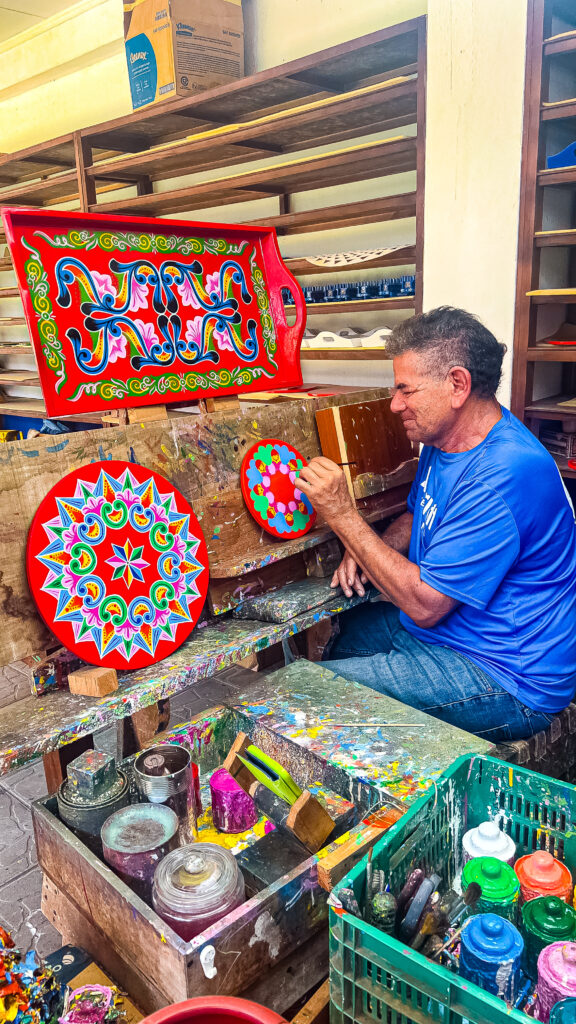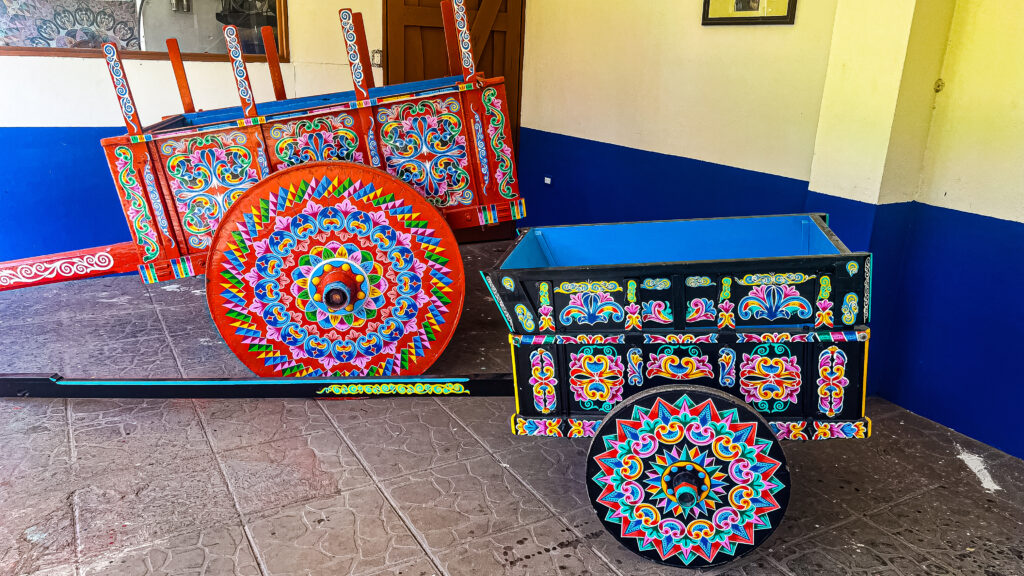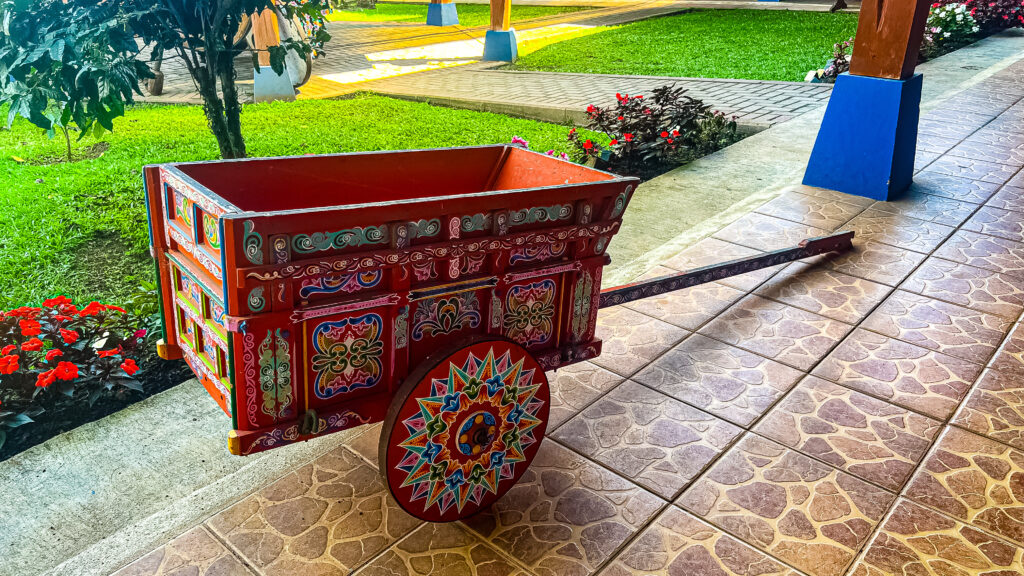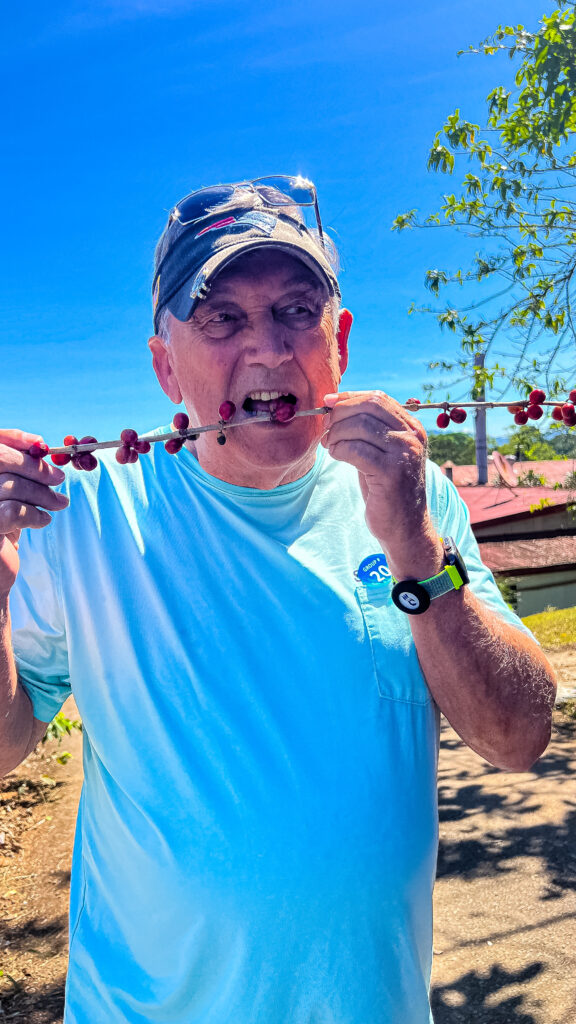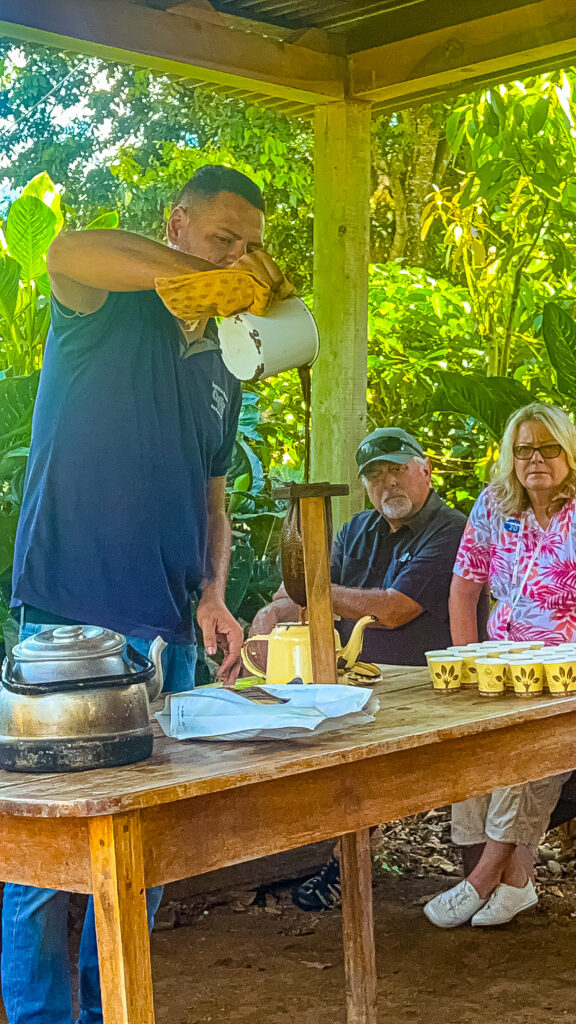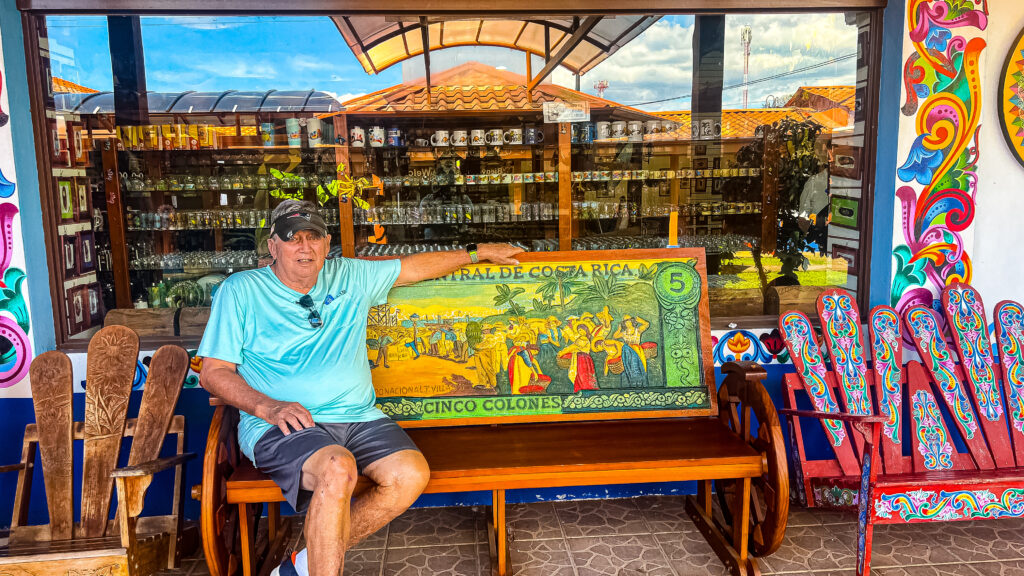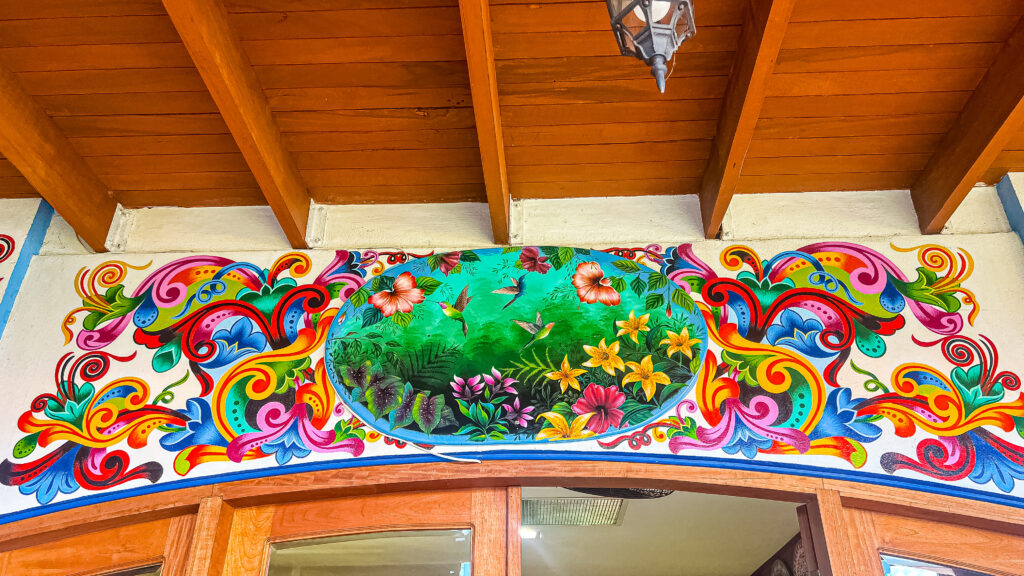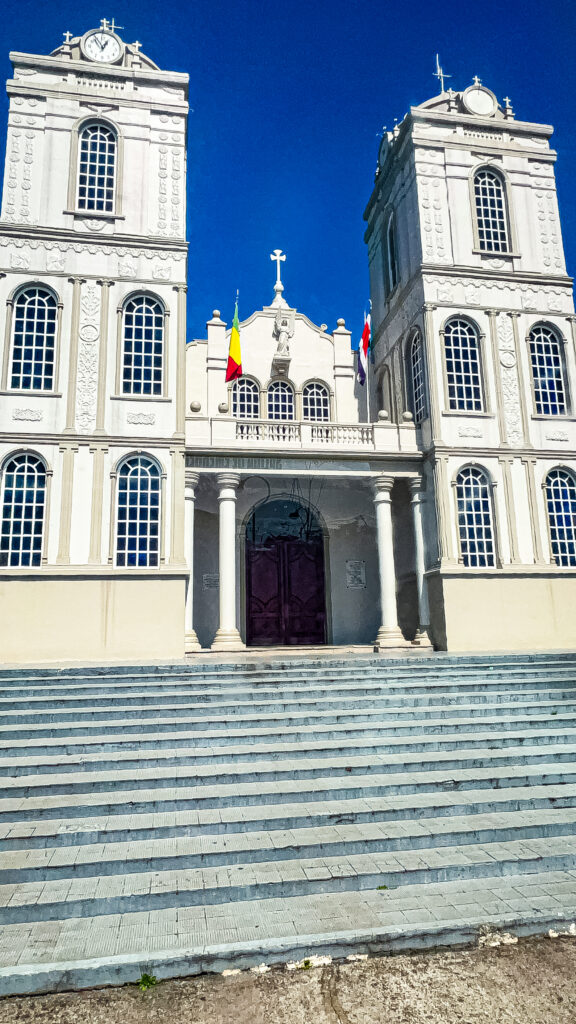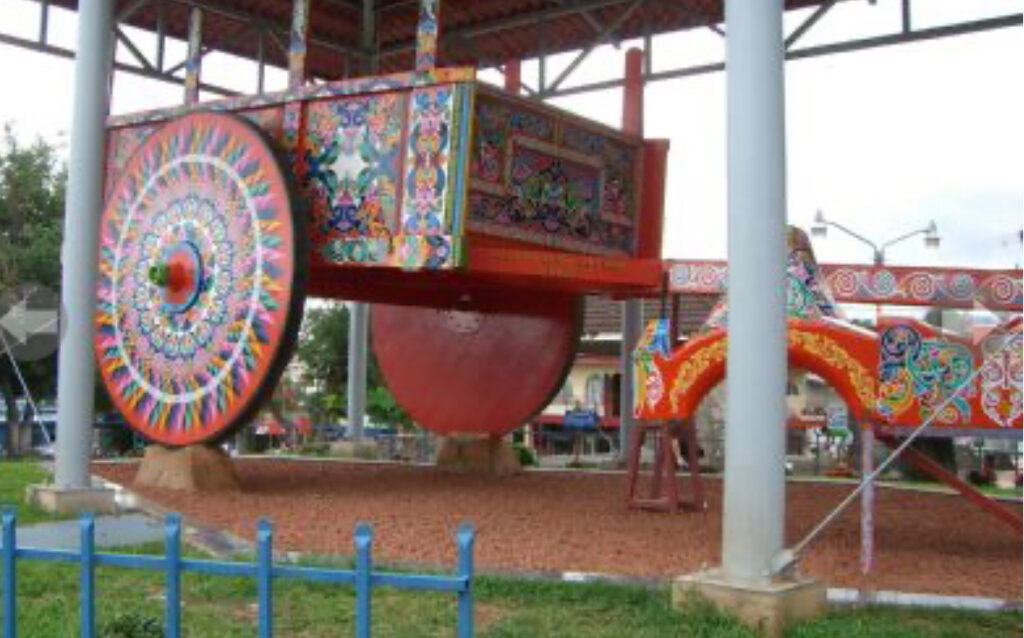Adventures
Our shore excursion in Puntarenas, Costa Rica, was a delightful blend of culture, history, and flavor as we embarked on the “Coffee, Chocolate, and Sarchi” tour. This enriching experience offered us a deeper appreciation for Costa Rica’s traditions and craftsmanship.
Our journey began at the Espíritu Santo Coffee Plantation (https://espiritusantocoffeetour.com/), nestled amidst the lush, green hills, and central valley of Costa Rica. This renowned plantation is celebrated for its dedication to sustainable coffee production and the rich flavors of its beans. During the tour, we learned about the meticulous process of coffee production, starting from the careful picking of ripe coffee cherries to the drying, roasting, and packaging stages. We were fascinated by the different drying methods, each contributing to the unique taste profiles of the coffee. We also sampled coffee made the traditional “Costa Rican” way using a chorreador, a simple yet ingenious pour-over coffee maker. The process begins by placing a cup or pot under a wooden stand that holds a cloth filter, called a bolsa, which is shaped like a sock. One tablespoon of ground coffee is measured per cup and poured into the bolsa, followed by about 4 ounces of boiling water poured slowly over the grounds. The coffee then drips into the cup below, creating a smooth and flavorful brew. To keep the filter clean, it’s rinsed thoroughly after each use and stored in the fridge or freezer. We learned that different brewers require varying grinds and that the honey coffee processing method can produce a harmonious balance of fruit and milk chocolate flavors. Additionally, Costa Ricans traditionally roast coffee using air roasting, resulting in a light and crisp cup. This experience enhanced our appreciation for the authentic flavors and techniques. It was incredible to see how every step of the process—from farm to cup—was carried out with such care and precision.
The tour also included a hands-on demonstration of chocolate making, where we learned about the transformation of cacao beans into rich, flavorful chocolate. Tasting the freshly prepared chocolate was a highlight, and it perfectly complemented the aromatic coffee we enjoyed during our visit.
Our next stop was the charming town of Sarchi (https://costarica.org/cities/sarchi/), known as the birthplace of Costa Rica’s colorful oxcarts. We visited the largest and oldest oxcart factory there, the Joaquin Chaverri Oxcart Factory. It was built in 1902, and is considered to be the birthplace of oxcart handicrafts in Costa Rica. These ornately decorated carts, which once played a vital role in transporting coffee and other goods, are now a proud symbol of Costa Rican culture and heritage. In 2005, UNESCO recognized the oxcart tradition in Costa Rica as a Masterpiece of the Oral and Intangible Heritage of Humanity. The oxcart is a national symbol of Costa Rica and is considered a genuine expression of popular art. At a local workshop, we witnessed the traditional process of crafting these oxcarts, using the same methods and tools that have been in place since 1923. One of the tour guides demonstrated the intricate techniques used to create the vibrant patterns and designs, showcasing the artistry and dedication required for this craft.
This shore excursion was informative and a feast for the senses. From the rich aroma of freshly roasted coffee to the vivid colors of Sarchi’s iconic oxcarts, every moment was an immersion into Costa Rica’s rich traditions. It was a day that left us with a newfound appreciation for the country’s heritage and the artistry behind its beloved exports.
